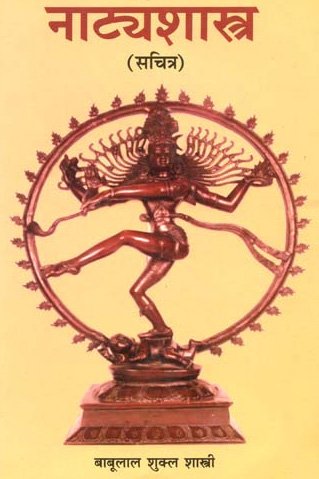Kacchapi, Kacchapī: 6 definitions
Introduction:
Kacchapi means something in Buddhism, Pali, Hinduism, Sanskrit. If you want to know the exact meaning, history, etymology or English translation of this term then check out the descriptions on this page. Add your comment or reference to a book if you want to contribute to this summary article.
Alternative spellings of this word include Kachchhapi.
In Hinduism
Natyashastra (theatrics and dramaturgy)
Source: Google Books: Dattilam: A Compendium of Ancient Indian MusicKacchapī (कच्छपी).—According to Śivaramamurit, the term kacchapī might have indicated a “guiter-like vīṇā”, an instrument, which he observed in the sculptures at Amarāvatī. The pear-shaped resonator resembles a tortoise-shell, but the long neck of this instrument contradicts a comparison with the animal.

Natyashastra (नाट्यशास्त्र, nāṭyaśāstra) refers to both the ancient Indian tradition (shastra) of performing arts, (natya—theatrics, drama, dance, music), as well as the name of a Sanskrit work dealing with these subjects. It also teaches the rules for composing Dramatic plays (nataka), construction and performance of Theater, and Poetic works (kavya).
Purana and Itihasa (epic history)
Source: archive.org: Puranic EncyclopediaKacchapī (कच्छपी).—Name of the harp of Nārada. (Śloka, 19, Chapter 54, Śalya Parva, Mahābhārata).

The Purana (पुराण, purāṇas) refers to Sanskrit literature preserving ancient India’s vast cultural history, including historical legends, religious ceremonies, various arts and sciences. The eighteen mahapuranas total over 400,000 shlokas (metrical couplets) and date to at least several centuries BCE.
In Buddhism
Tibetan Buddhism (Vajrayana or tantric Buddhism)
Source: academia.edu: The Structure and Meanings of the Heruka MaṇḍalaKacchapī (कच्छपी) is the name of a Ḍākinī who, together with the Vīra (hero) named Kacchapa forms one of the 36 pairs situated in the Jalacakra, according to the 10th century Ḍākārṇava chapter 15. Accordingly, the jalacakra refers to one of the three divisions of the saṃbhoga-puṭa (‘enjoyment layer’), situated in the Herukamaṇḍala. The 36 pairs of Ḍākinīs [viz., Kacchapī] and Vīras are white in color; the shapes of their faces are in accordance with their names; they have four arms; they hold a skull bowl, a skull staff, a small drum, and a knife..

Tibetan Buddhism includes schools such as Nyingma, Kadampa, Kagyu and Gelug. Their primary canon of literature is divided in two broad categories: The Kangyur, which consists of Buddha’s words, and the Tengyur, which includes commentaries from various sources. Esotericism and tantra techniques (vajrayāna) are collected indepently.
Languages of India and abroad
Sanskrit dictionary
Source: Cologne Digital Sanskrit Dictionaries: Monier-Williams Sanskrit-English Dictionary1) Kacchapī (कच्छपी):—[=kaccha-pī] [from kaccha-pa > kaccha] f. a female tortoise or a kind of small tortoise, [cf. Lexicographers, esp. such as amarasiṃha, halāyudha, hemacandra, etc.]
2) [v.s. ...] a cutaneous disease, wart, blotch, [Suśruta]
3) [v.s. ...] a kind of lute (so named from being similar in shape to the tortoise; cf. testudo)
Source: DDSA: Paia-sadda-mahannavo; a comprehensive Prakrit Hindi dictionary (S)Kacchapī (कच्छपी) in the Sanskrit language is related to the Prakrit word: Kacchabhī.
Sanskrit, also spelled संस्कृतम् (saṃskṛtam), is an ancient language of India commonly seen as the grandmother of the Indo-European language family (even English!). Closely allied with Prakrit and Pali, Sanskrit is more exhaustive in both grammar and terms and has the most extensive collection of literature in the world, greatly surpassing its sister-languages Greek and Latin.
Kannada-English dictionary
Source: Alar: Kannada-English corpusKacchapi (ಕಚ್ಛಪಿ):—
1) [noun] a female tortoise.
2) [noun] a kind of Indian lute which has a tortoise-like gourd at one end.
3) [noun] a skin disease causing a discoloured patch or blemish.
Kannada is a Dravidian language (as opposed to the Indo-European language family) mainly spoken in the southwestern region of India.
See also (Relevant definitions)
Starts with: Kacchapika, Kacchapim-laganem.
Full-text: Kacchapa, Kacchabhi, Kacchapim-laganem, Kacchapika, Jalacakra.
Relevant text
Search found 4 books and stories containing Kacchapi, Kacchapī, Kaccha-pi, Kaccha-pī; (plurals include: Kacchapis, Kacchapīs, pis, pīs). You can also click to the full overview containing English textual excerpts. Below are direct links for the most relevant articles:
Chaitanya Bhagavata (by Bhumipati Dāsa)
Verse 1.1.74 < [Chapter 1 - Summary of Lord Gaura’s Pastimes]
Amarakoshodghatana of Kshirasvamin (study) (by A. Yamuna Devi)
Musical instruments (e.g., Stringed, Percussions, Cymbals and Wind-blown) < [Chapter 4 - Cultural Aspects]
Complete works of Swami Abhedananda (by Swami Prajnanananda)
Appendix 2 - Indian Art in all its Phases < [Discourse 1 - India and Her People]
Natyashastra (English) (by Bharata-muni)